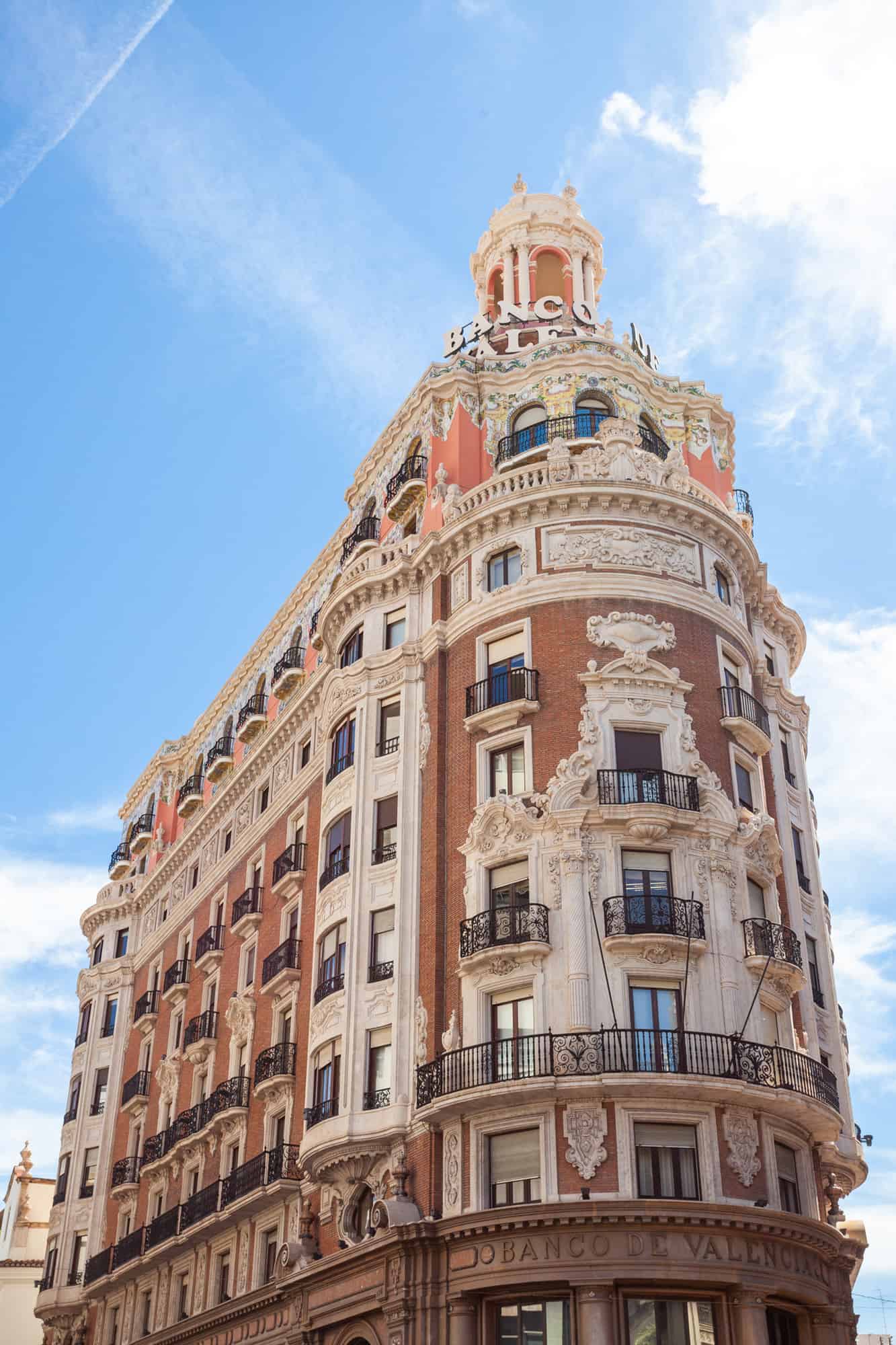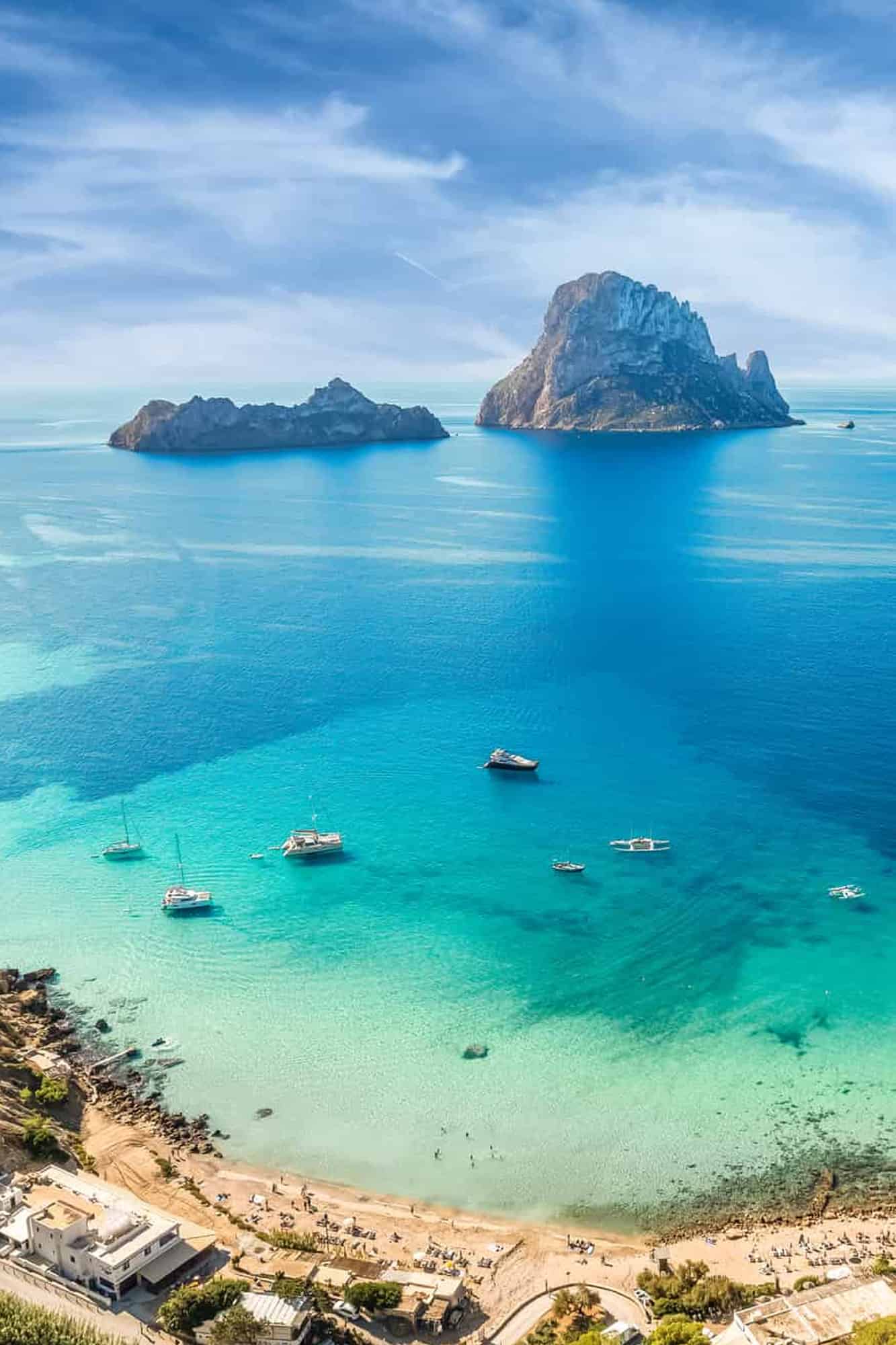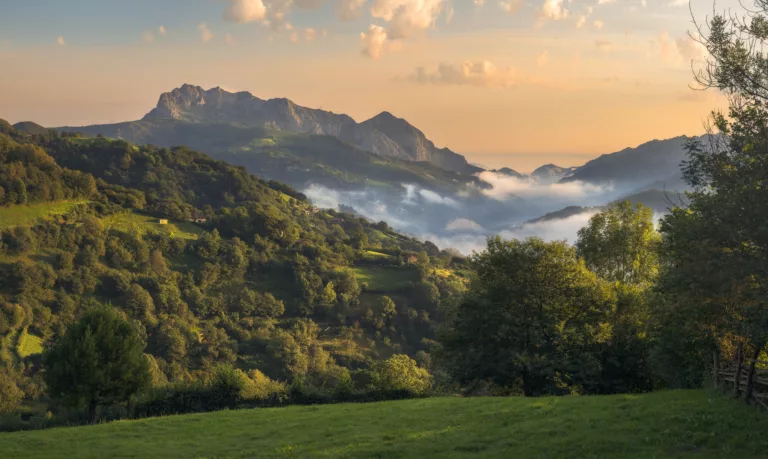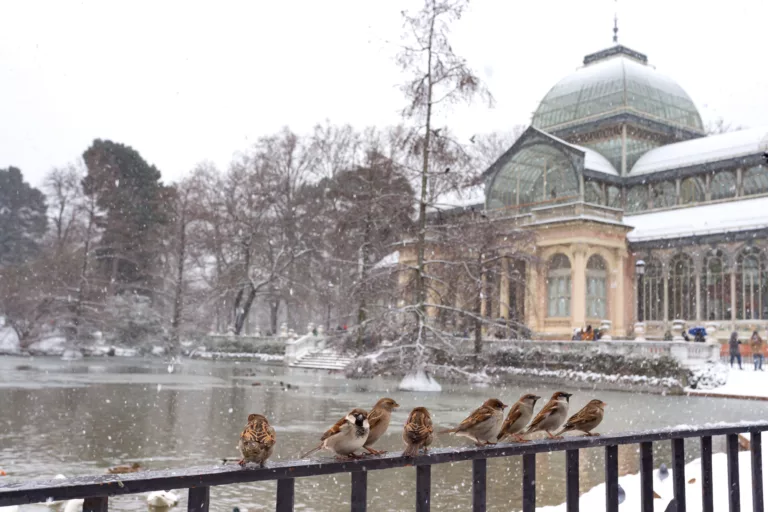What Is The Coldest City in Spain? (2024)
Spain’s reputation for sun-soaked beaches and mild winters often overshadows its frostier side. Yet, with its diverse climate, the country has some cities where the mercury plunges, especially in January. As a travel blogger with 5 years of experience living in Spain, I’ve had the chance to explore the country’s wide-ranging climates. This article delves into the coldest cities in the country, shedding light on the factors contributing to its chilly weather.


Hi, we’re Timon & Filipa!
We travel across Spain in our motorhome, Speedy, and update TravelSpain24 with fresh content, practical tips, and personal stories from the road. Our goal is to help you experience Spain beyond the typical tourist trails.
The Coldest City in Spain (2024)
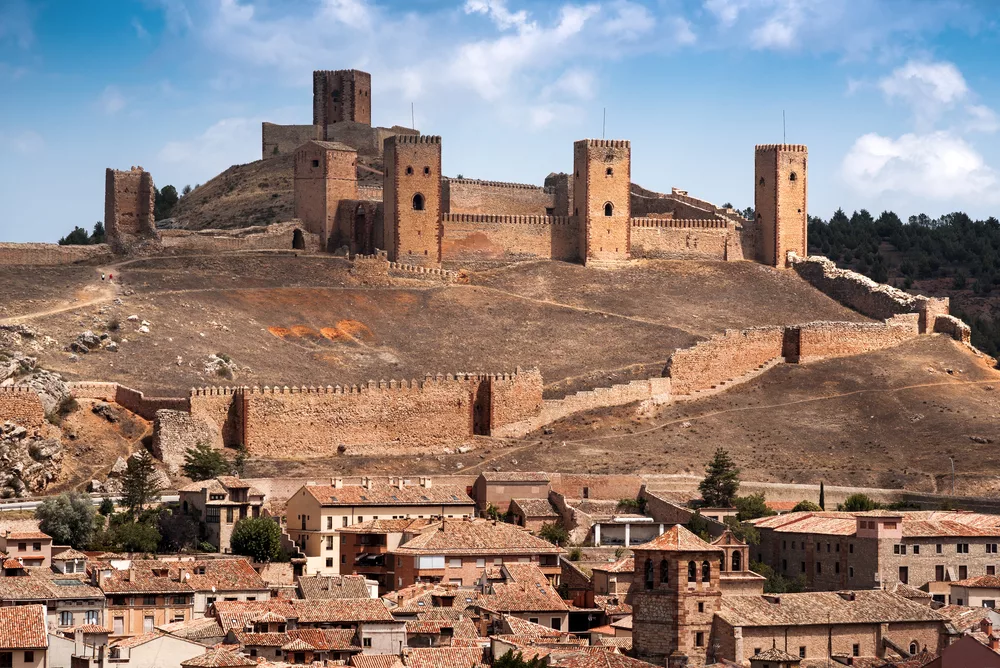
Despite its balmy coastal areas, Spain is a tapestry of climates, and some cities feel the winter chill more than others. One city that often tops the list of Spain’s coldest is Molina de Aragón. In January, the average temperature here can dip as low as −3.5°C (25.7°F), making it one of the coldest destinations in the country.
Molina de Aragón has several times been reported as the coldest city in all of Spain. In December 2001, the city endured average temperatures plummeting to −11°C (12°F). Other regions in Spain have faced the bitter cold too, with temperatures sometimes dropping below −20°C (−4°F).
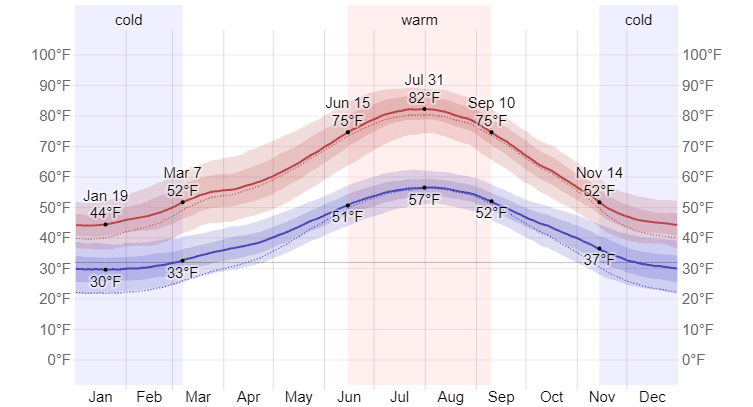
What Was the Coldest Recorded Temperature in Spain?
Spain reached its lowest recorded temperature on January 7, 2021, when the mercury dropped to an astounding −35.9°C (−32.6°F). This frigid temperature was registered at the Vega de Liordes weather station in the northwestern province of Leon, snatching the record for the coldest temperature ever measured in the country’s history.
In the past, freezing temperatures were also noted in other parts of Spain as well. For example, in February 1956, a temperature of −32°C (−26°F) was experienced in Estany-Gento, located in the Catalan province of Lleida.
Another region prone to record-breaking cold temperatures is Teruel in Aragón. In 1963, this province saw a temperature of −30°C (−22°F) in the town of Calamocha.
The Coldest Places in Spain
So you may ask, what are Spain’s coldest places to visit? One may think they are confined to only the mountainous parts of the country, but surprisingly winter’s bite can be felt everywhere. Weather patterns drifting from over the Atlantic to the northern coastline impact several major cities in that area.
La Torre de Cabdella, in Lleida
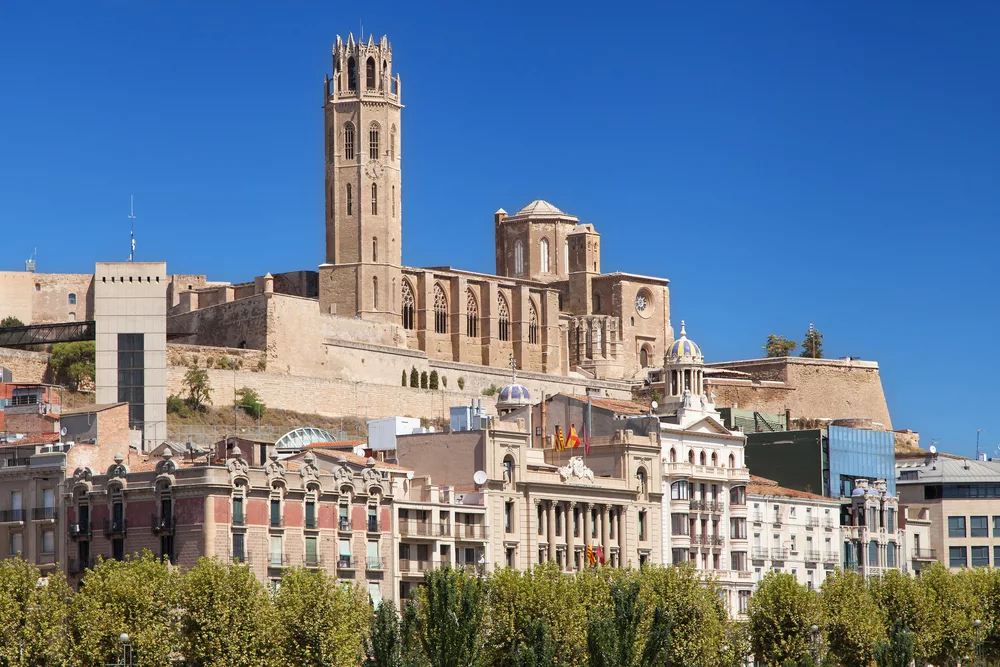
La Torre de Cabdella, or “Cabdella Tower” stands proudly high in the mountains of Lleida, a Spanish province known for its cold wintery weather. This snowy village is a perfect symbol of the chilly atmosphere in the area. In February 1956, temperatures sank to a surprising −32°C (−25.6°F). Lleida is a fascinating area to visit because of its interesting history and remarkable architecture, such as the Seu Vella Cathedral, and Sant Martí de la Torre de Cabdella. Visitors love being immersed in the local culture and enjoy tasting traditional dishes in the diverse culinary scene, with cold temperatures adding a refreshing touch to the experience.
Temperature record: −32°C (−25.6°F)
Date recorded: February 2, 1956
Calamocha, in Teruel
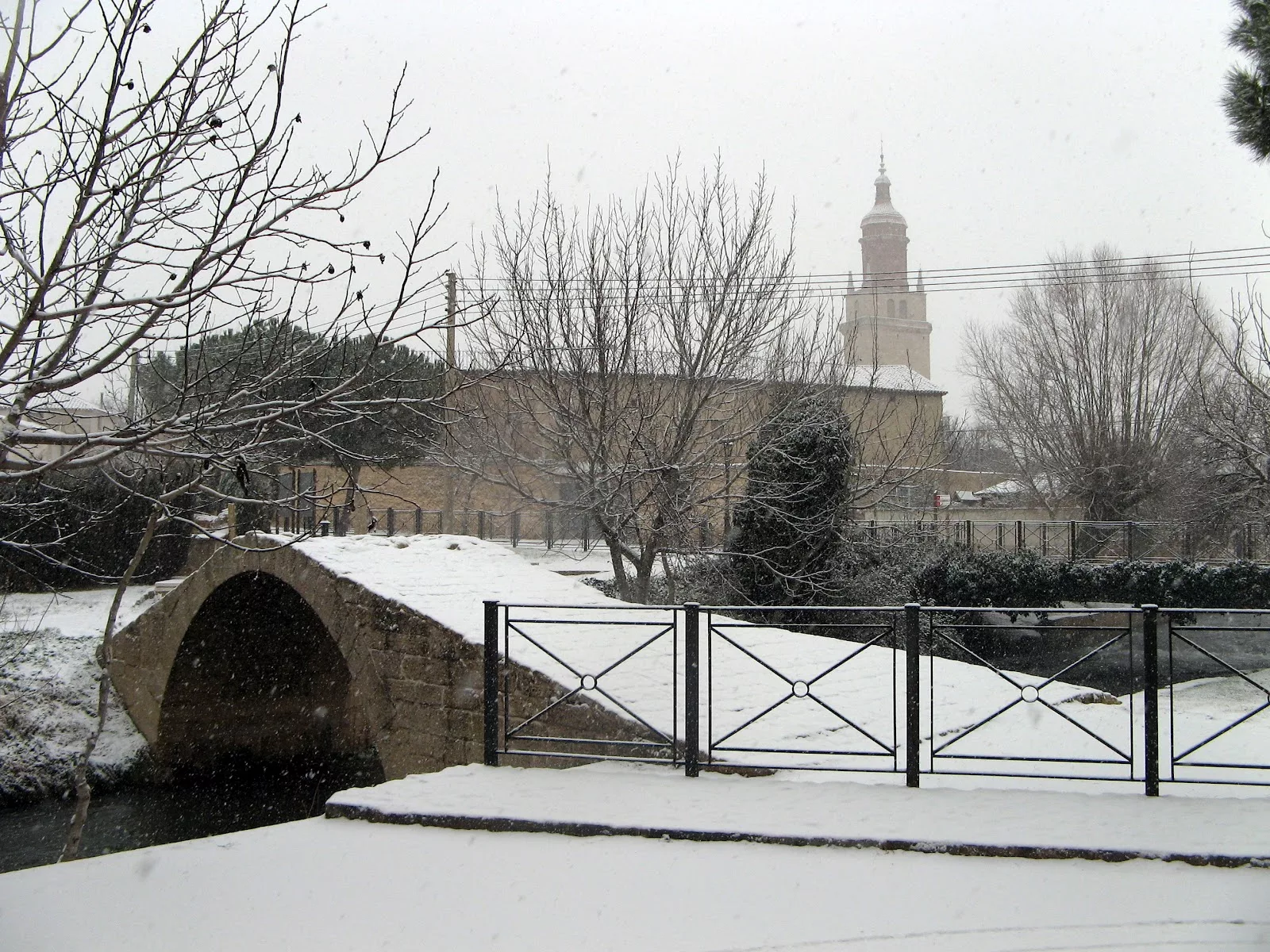
It’s well known as one of Spain’s coldest towns. Calamocha’s icy grip is legendary. The Calamocha-Fuentes Claras observatory recorded a staggering −30°C (−22°F) in December 1963, marking it the lowest temperature ever measured in a populated country area. Calamocha is defined by not only its cold weather but also a quaint town with an interesting historical background. The town boasts beautiful churches, such as the Church of San Andrés, offering an inviting atmosphere that warms the hearts of travelers despite the frosty air outside.
Temperature record: −30°C (−22°F)
Date recorded: December 1963
📍 See Calamocha on Google Maps
Molina de Aragón, in Guadalajara
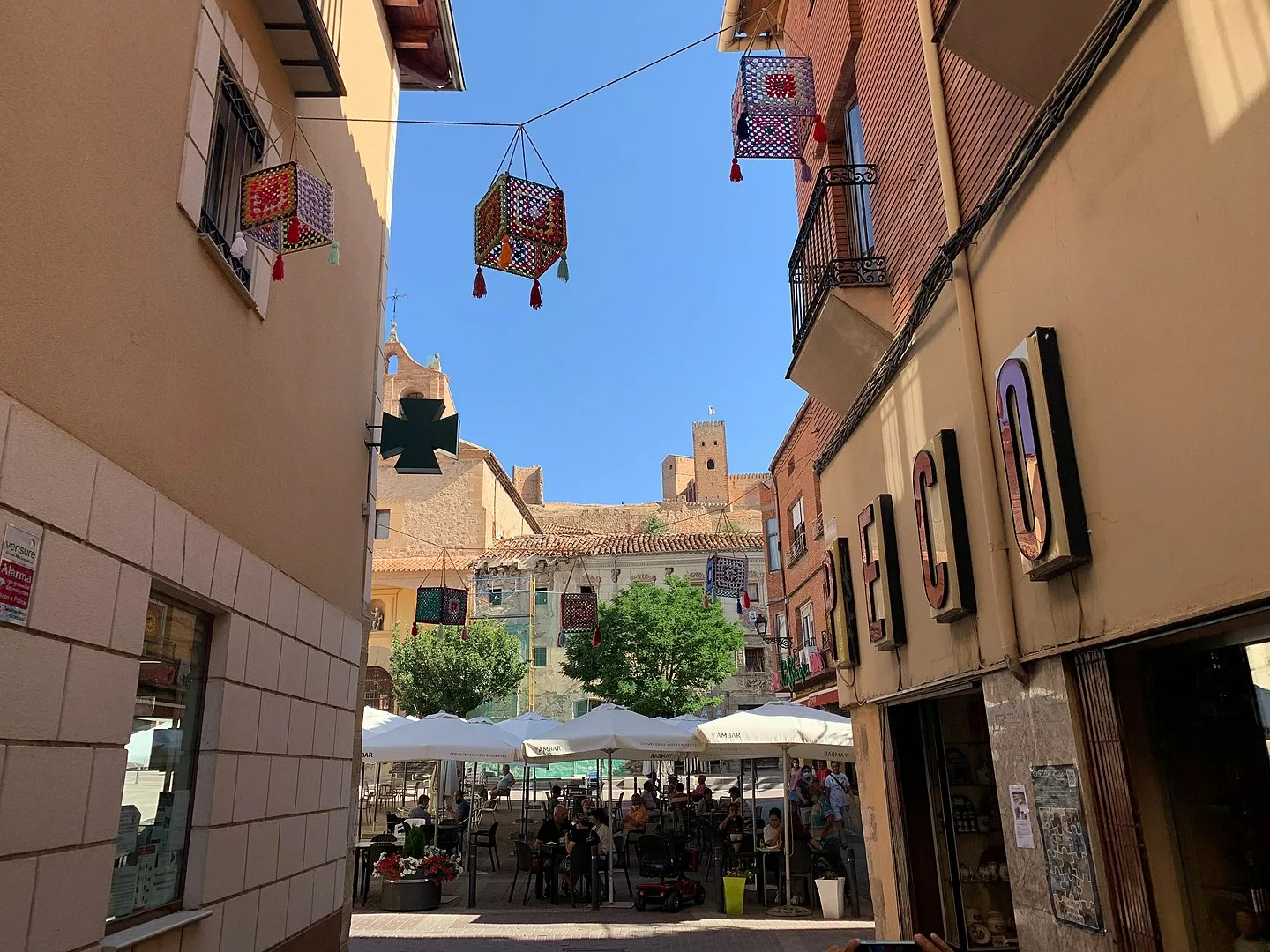
Perched 1,000 meters above sea level, Molina de Aragón is no stranger to frigid weather. January normally brings average temperatures of −3.5°C (25.7°F), and the town holds a historic record low of −28.2°C (−18.8°F) in 1952. The town’s medieval castle and charming streets give visitors a glimpse into Spanish history. Don’t miss the chance to try local delicacies, like the famous “migas,” which are perfect for warming up on a cold day.
Temperature record: −28.2°C (−18.8°F)
Date recorded: January 28, 1952
📍 See Molina de Aragón on Google Maps
Reinosa, in Cantabria
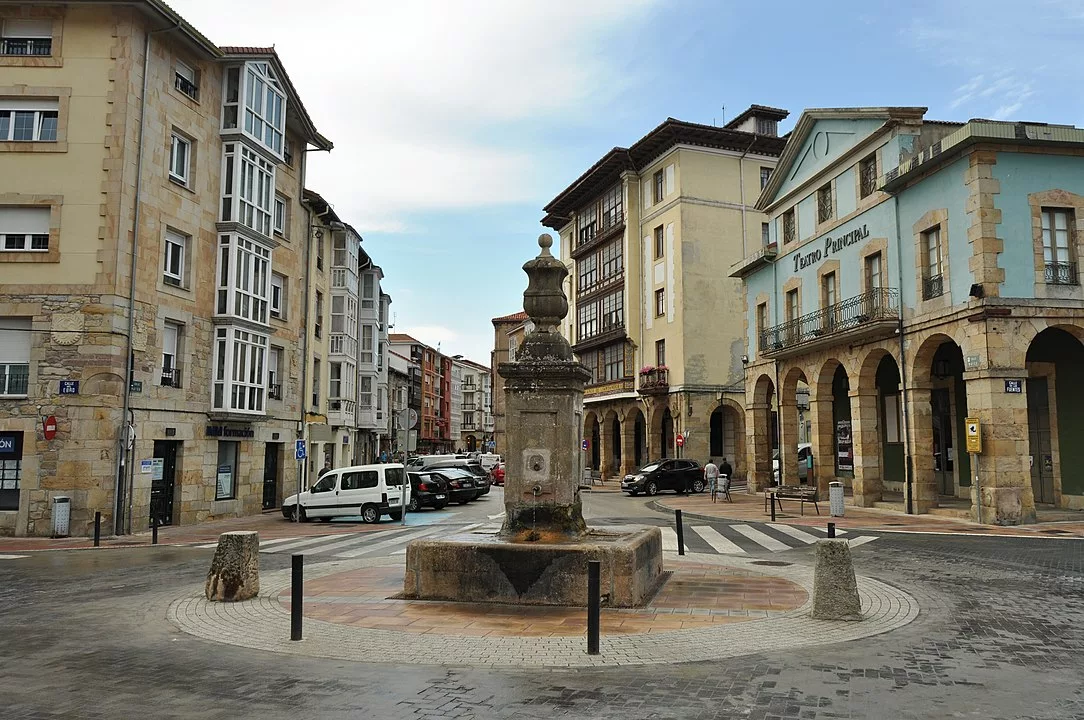
Reinosa tucked away in the province of Cantabria, is met with a sharp temperature plunge as autumn transitions to winter, giving locals and visitors alike a taste of the cold. Reinosa is also a gateway to the beautiful Alto Campoo ski resort, making it an ideal destination for winter sports enthusiasts. The town offers various activities, from exploring its picturesque streets and historic buildings to indulging in local cuisine at several cozy restaurants.
Temperature record: −24.6°C (−12.3°F)
Date recorded: January 4, 1971
📍 See Reinosa on Google Maps
Albacete
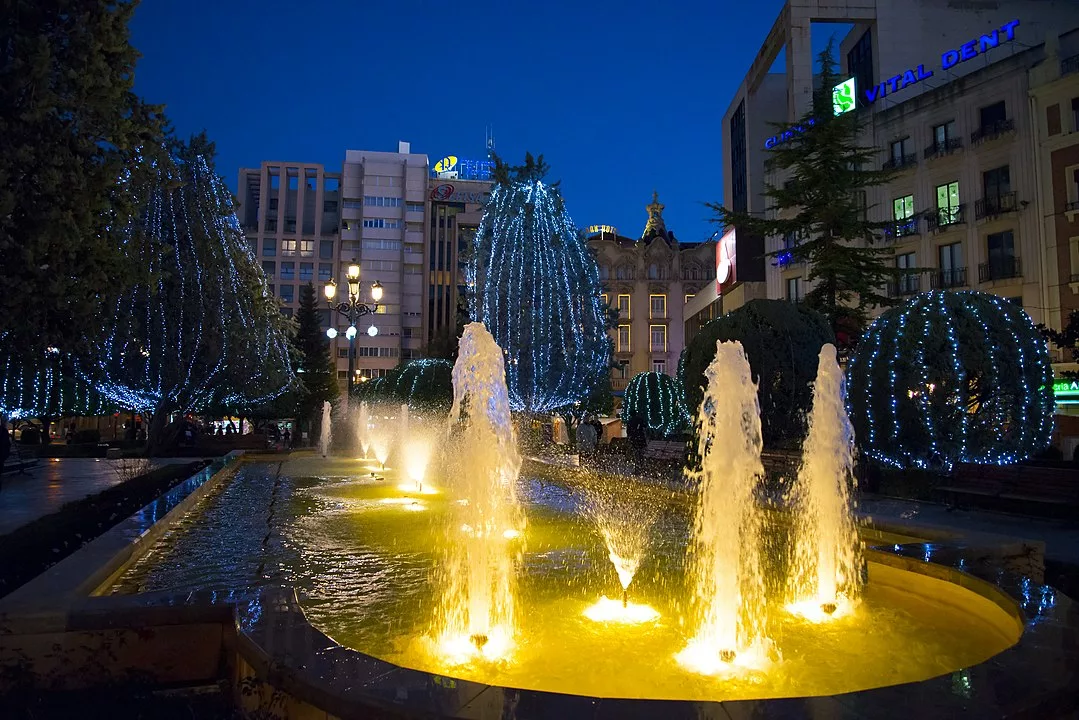
Albacete, also famous for its wintry climate, is often shrouded in the cold during the winter months, making it a favorite destination for those seeking cooler weather. Albacete is home to numerous parks and gardens. Abelardo Sánchez Park is perfect for a brisk walk while admiring the beautiful scenery. The city’s rich history is seen in its stunning architecture, such as the Cathedral of San Juan Bautista and the iconic Pasaje de Lodares.
Temperature record: −24°C (−11.2°F)
Date recorded: January 3, 1971
📍 See Albacete on Google Maps
Burgos
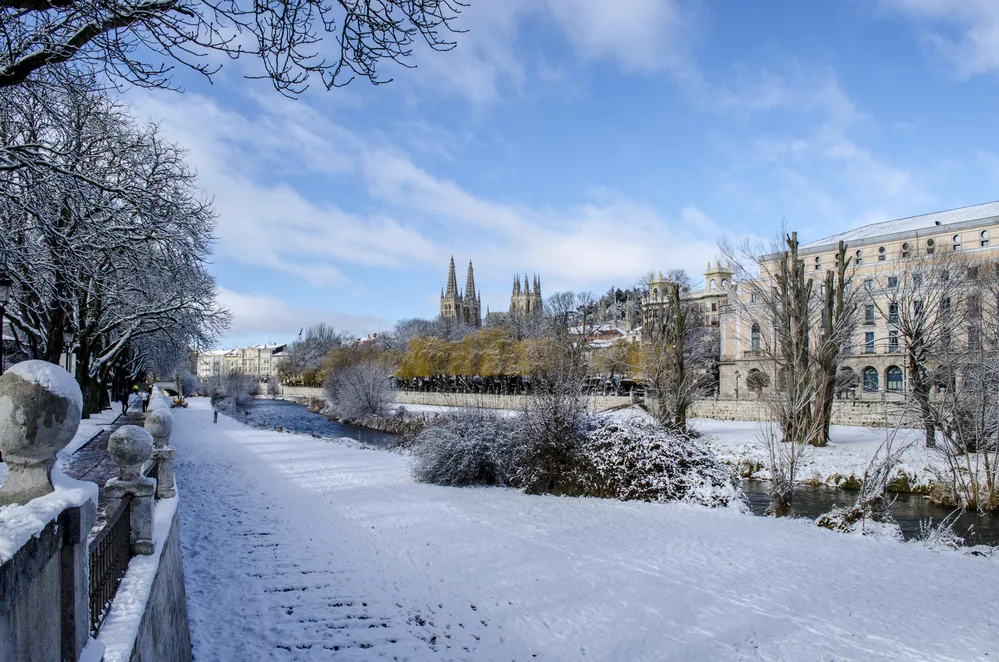
In northern Spain, Burgos is known for its harsh winds and freezing temperatures that sweep through the city during the winter. Burgos is also famous for its impressive Gothic architecture, with the Burgos Cathedral being a must-see landmark. The city’s vibrant culture, art, and food scene contrast warmly to the chilly atmosphere, making it an unforgettable destination for travelers.
Temperature record: −22°C (−7.6°F)
Date recorded: January 3, 1971
📍 See Burgos on Google Maps
Sigüenza
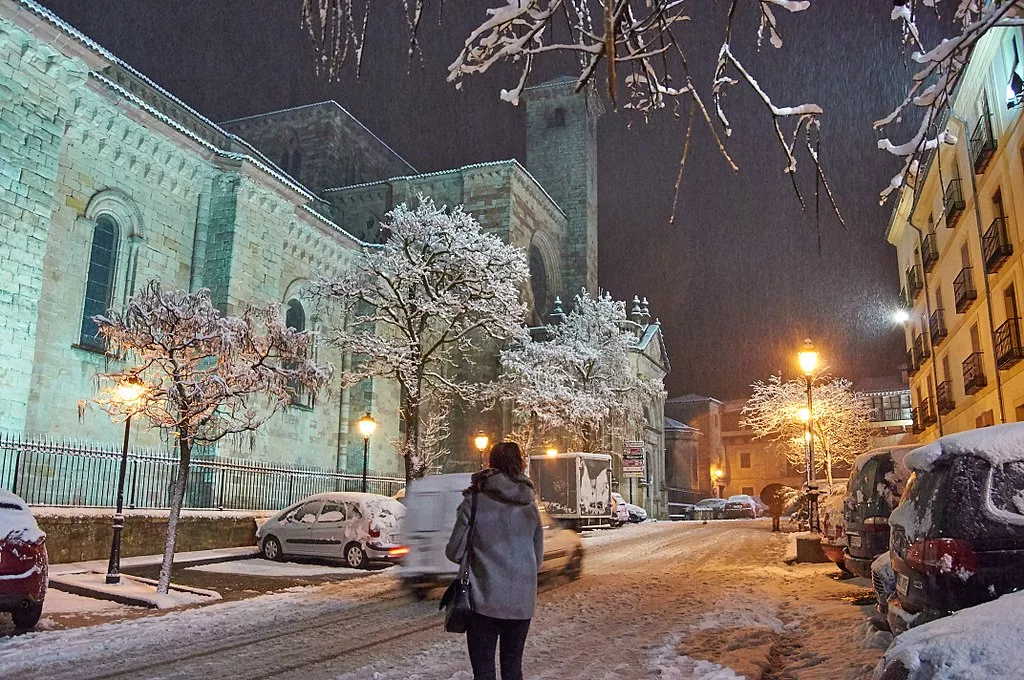
Sharing similarities with its chilly counterparts, Sigüenza also endures harsh winters and low temperatures. Its geographic location and elevation contribute to this frosty climate, creating an enchanting winter landscape. The town’s charm comes from its medieval heritage, featuring the unique Sigüenza Cathedral and the impressive Castle of Sigüenza, which now is a Parador hotel. Visitors can lose themselves in the town’s cobbled streets, discovering hidden gems and cozy eateries that warm their hearts.
Temperature record: −14.4°C (6.08°F)
Date recorded: Unknown
📍 See Sigüenza on Google Maps
Average Summer Temperatures in Spain
Spain is known for its pleasant sunny weather, especially during the summer. Throughout the country, maximum temperatures arrive in July and August, creating hot and dry conditions. Inland cities such as Seville, summer temperatures often reach 38−40°C (100−104°F), with occasional spikes up to 45°C (113°F)!
However, not all parts of Spain experience the same intense heat during the summer. For example, Isaba in the Pyrenees has average summer temperatures hovering around 17.5°C (63.5°F), with warm days and cooler nights. This makes it an ideal destination for those looking to escape the heat.
The table below provides an overview of the average summer temperatures for some of Spain’s most popular cities. This information will help you better understand the country’s diverse climate and how to plan your travels accordingly.
| City | June | July | August |
|---|---|---|---|
| Madrid | 25°C (77°F) | 29°C (84°F) | 28°C (82°F) |
| Barcelona | 23°C (73°F) | 26°C (78°F) | 26°C (78°F) |
| Valencia | 24°C (75°F) | 27°C (81°F) | 27°C (81°F) |
| Seville | 28°C (82°F) | 32°C (89°F) | 31°C (87°F) |
| Zaragoza | 24°C (75°F) | 28°C (82°F) | 27°C (81°F) |
| Málaga | 24°C (75°F) | 27°C (80°F) | 27°C (80°F) |
| Murcia | 25°C (77°F) | 29°C (83°F) | 28°C (82°F) |
| Palma de Mallorca | 23°C (73°F) | 26°C (79°F) | 26°C (79°F) |
| Las Palmas | 22°C (72°F) | 23°C (74°F) | 23°C (74°F) |
| Bilbao | 21°C (69°F) | 23°C (73°F) | 23°C (73°F) |
| Alicante | 24°C (75°F) | 27°C (81°F) | 27°C (81°F) |
| Córdoba | 28°C (82°F) | 33°C (91°F) | 32°C (89°F) |
| Vigo | 20°C (68°F) | 22°C (72°F) | 22°C (72°F) |
| Gijón | 19°C (65°F) | 21°C (69°F) | 21°C (69°F) |
| Granada | 25°C (77°F) | 29°C (83°F) | 28°C (82°F) |
As you can see, summer temperatures in Spain can vary greatly depending on the location. While many cities experience high temperatures and dry weather, some areas offer milder conditions with refreshing nights. The diversity in climate makes the country an appealing destination for all types of summer travelers.
Final Thoughts: Coldest City in Spain

Spain is known for its warm climate, but some regions experience significantly colder weather. Aragon is considered one of the coldest places in the country, with temperatures often dropping below −20°C (−4°F) during winter months. However, when it comes to cities, a few contenders stand out for their low temperatures.
Molina de Aragón, a town 1,000 meters above sea level in the province of Guadalajara, recorded an extremely low temperature of −28.2°C (−19°F) in 1952.
Another city known for its low temperatures is Calamocha, which holds the record for Spain’s lowest temperature ever in a populated area at −30°C (−22°F), in December 1963.
For cities with a population above 200,000, Gijón in Asturias and A Coruña in Galicia are the coldest during the summer season. Their average high temperatures between May and September range from just 18 to 23°C (64−73°F).
While the coldest city in Spain may vary depending on the criteria, several locations experience particularly low temperatures compared to the country’s otherwise warm climate. These regions are an interesting alternative if you’re looking for a different side of Spain’s weather and landscapes. You might be surprised to learn that these cities in Spain sometimes experience snowfall.
Coldest Places in Spain: FAQs
In this section, I’ll address frequently asked questions about the coldest places in Spain. From high-altitude destinations to frosty inland regions, I’ll provide useful information to help you plan your visit, pack accordingly, and make the most of your experience in these unique locations.
Where is the coldest area in Spain?
In Spain, the coldest area is the Pyrenees mountain chain, on the border of France. During winter, temperatures there can fall well below zero, making it an excellent choice for skiers and snowboarders! ❄️
What is the coldest city in Spain in the summer?
When it comes to the coolest city in Spain’s summer months, Burgos is the winner 🏆. Located in the Castile and León region, you can experience milder temperatures in the warmer months due to its elevation of around 860 meters (2,822 feet) above sea level. A wonderful place for escaping the summer heat!
Gijón in Asturias and A Coruña in Galicia stand out as the coldest cities for populations above 200,000. Their average high temperatures between May and September only range from just 18 to 23°C, offering a refreshing break from the sweltering heat experienced in other parts of the country.
What major cities in Spain are the coldest?
Valladolid, Burgos, and León are the coldest major cities throughout all seasons. Their continental climate brings harsh winters and more moderate summers compared to the coastal regions. Perfect for those who prefer milder temperatures!
How will climate change impact Spain’s weather?
Spain can expect hotter and more arid summers, increased heat waves, and a greater likelihood of droughts and wildfires. The country also faces more rainfall than in the past, with a higher risk of flooding. Let’s work together to reduce our carbon footprint and adopt green practices for a better future! 💚🌱
Search the site
Popular Destinations
Just letting you know
When you buy something through our links, we’ll earn a small commission—don’t worry, it won’t cost you any extra! It’s a win-win, right?
Exclusive Heymondo Travel Insurance Offer
Planning a trip? Make sure you’re covered! We’ve teamed up with Heymondo to give our readers a special deal: 5% off travel insurance. Grab this deal and know you’re looked after on your next trip.



